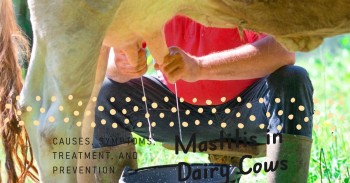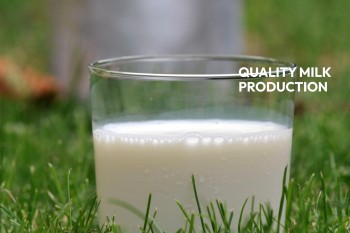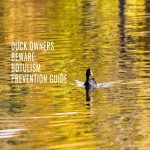🐄🥛 Mastitis Control Plans for Dairy Herds 🐮🧫
Mastitis is one of the most common and costly diseases affecting dairy cows worldwide 🌍. It is defined as inflammation of the mammary gland (udder) usually caused by bacterial infection🦠. Mastitis can lead to decreased milk production, changes in milk composition, and even permanent damage to udder tissue if not treated promptly and properly 😣. As a veterinary professional specializing in dairy health, implementing an effective mastitis control program is one of the most important things you can do to safeguard both cow health and farm profitability 💰💵🤑. In this comprehensive guide, we will cover key components of mastitis control plans, best practices for prevention and treatment, and tips for developing a successful mastitis management strategy tailored to your dairy operation 👩🌾🐄.
🚨 Signs and Symptoms of Mastitis 🚨
Detecting mastitis as early as possible is crucial for effective treatment and reducing spread to other cows. Here are the main clinical signs to look out for during milking and cow exams:
Abnormal milk appearance - flakes, clots, watery 🥛
Swelling, heat, pain, redness of udder 🐄
Decreased milk production from affected quarter(s) 📉
General signs of illness - lethargy, fever, loss of appetite 🤒
Cows with subclinical mastitis may not show obvious symptoms, so routine screening through tests like the California Mastitis Test (CMT) or somatic cell count (SCC) is important 🔬. Sudden increases in bulk tank SCC can indicate problems with contagious pathogens spreading through the herd.
🧫 Common Mastitis-Causing Pathogens 🦠
Mastitis can be caused by a variety of bacterial pathogens as well as some yeasts and algae. Knowing the most prevalent bugs on your farm along with their basic characteristics will help guide prevention and treatment protocols. We can divide mastitis pathogens into two main categories:
😷Contagious pathogens😷 are easily spread between cows through milking equipment, hands, and shared housing areas. They tend to cause chronic subclinical infections leading to high SCC. Common contagious bugs include:
Staphylococcus aureus - the most common contagious pathogen, lives deep in udder tissue 🧫
Streptococcus agalactiae - also infects udder tissue, major cause of elevated SCC 📈
Mycoplasma species - tiny bacteria lacking cell walls, so resistant to some antibiotics 💊
🐄Environmental pathogens🐄 enter the teat canal through contact with contaminated bedding, mud, or manure. They tend to cause acute clinical mastitis. Examples include:
Coliforms like E. coli and Klebsiella - opportunistic invaders, peak after rainy periods 🌧️
Streptococcus uberis - found in bedding material, treats well with antibiotics 💊
Trueperella pyogenes - causes severe clinical cases, absesses may form 😣
👨⚕️ Proper Identification of Mastitis Pathogens
Bacterial culture and antibiotic sensitivity testing of milk samples should be performed whenever feasible:
Use aseptic technique for collection and transport to lab 🧪
Ideal to sample during active flare-up or just after treating clinical case 🐄
Results allow for targeted treatment based on pathogen and its drug sensitivities 💊
Can trace sources and patterns of infection spread on the dairy 🕵️
Relying on clinical signs alone to determine causative pathogen and treatment approach is suboptimal. Culture and sensitivity results may not always be feasible or practical, however, so Gram stains, CMT scores, cow history, and environmental context can help narrow causes down in the field.
⬇️ Key Components of a Mastitis Control Program ⬇️
A strategic and proactive approach is necessary to protect cow health and milk quality from the risks and costs of mastitis. Here are the core elements that should be included in an effective mastitis control plan:
😷 Proper Milking Procedures 🐄
Use recommended premilking teat disinfectant and post-milking teat dip on all cows 🧴
Check that milking equipment is well maintained and adjusted for proper vacuum levels 🤝
Establish consistent schedule and sequence for milking cows 🕑
Use strip cups and CMT routinely to detect clinical and subclinical cases before milker unit attachment 🥛🧪
Improve milker technique through training and evaluation to prevent teat end damage 👩🌾
🛏 Clean, Dry Housing Environment 🚜
Replace soiled bedding frequently using low-dust, fast-drying materials 🛋️
Ensure adequate space availability and ventilation in housing areas 🏡
Group cows by production level and risk factors to limit spread of contagious pathogens 🐮🐄🐄
Keep cows clean through proper manure management and hoof trimming schedules 🐾
🐄🐄 Herd Health and Nutrition 🥬
Monitor SCC trends and treat clinical cases promptly to reduce pathogen transmission 🔬
Dry treat all cows with commercial antibiotic infusion or teat sealant at dry off 💉
Feed a diet to support immune function - adequate energy, minerals, vitamins 🥬
Schedule regular herd vet visits to assess mastitis risks and prevention effectiveness 🐄👨⚕️
📊 Record Keeping and Monitoring 🗒️
Track clinical mastitis cases, treatments, and outcomes 📝
Monitor monthly SCC and microbiological trends 📈
Conduct cow-side CMT checks at dry off and as needed 🧪
Review mastitis records regularly to identify high-risk cows or lapses in protocols ✏️
🦠 Contagious Pathogen Control Strategies 🧫
Limiting spread of bugs like Staph aureus and Strep ag requires vigilant hygiene practices:
Post-milking teat disinfection is the #1 preventive measure 🧴
Identify and segregate or cull chronic, high SCC cows 🚫🐄
Clean and disinfect milking equipment thoroughly between infected and clean cows 🧼
Consider treating infected quarters with intramammary antibiotics at dry off and clinical flare ups 💉
Prevent teat lesions and milk backflow into buckets during milking 🥛
💧 Environmental Pathogen Prevention Tips 🌱
These steps will help safeguard against environmental mastitis risks:
Maintain clean, dry housing and bedding areas 🛏️
Dip teats with germicidal product right after milking 🧴
Treat clinical cases promptly with intramammary or systemic antibiotics 💊
Avoid overcrowding and mix severities when grouping cows 🐄🐮
Reduce exposure to potential sources like mud or standing water 🌊
Consider dry cow antibiotic infusion in high-risk cows 💉
By incorporating these keys steps into a comprehensive and consistent mastitis control plan, both clinical and subclinical incidence rates can be reduced significantly. Commitment and follow-through from all farm personnel are critical for success. Monitoring program results through milk cultures, cow exams, and SCC tracking allows for adjustments and improvements to be made over time. With a proactive approach, mastitis can be better managed for healthier, more productive cows and higher milk quality. 🐄🥛👍
Let me know if you need any other tips or recommendations for developing an effective mastitis control strategy! I'm always happy to help dairy producers and veterinarians combat this challenging disease. 🐮😊
















